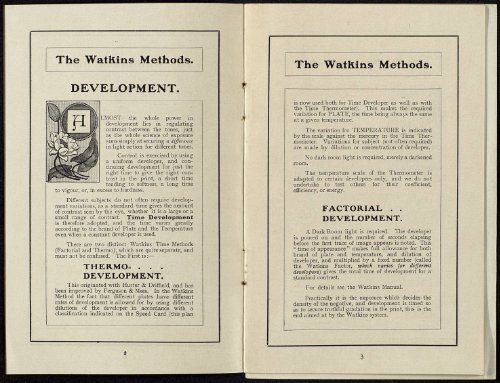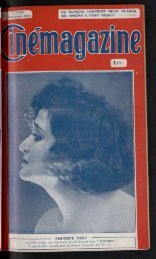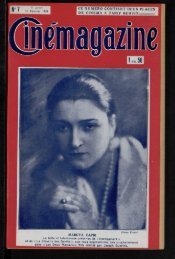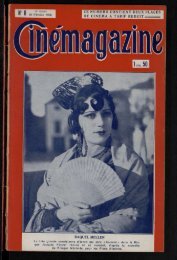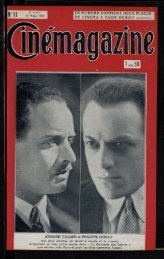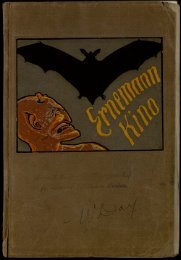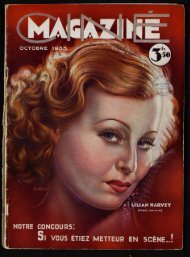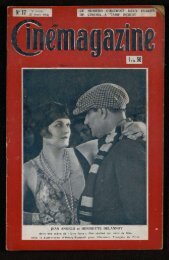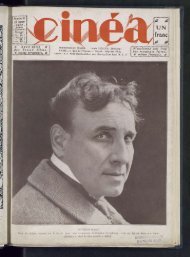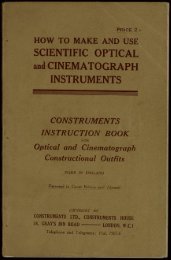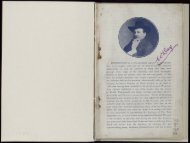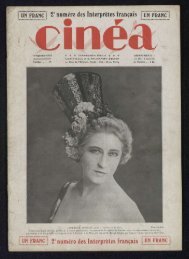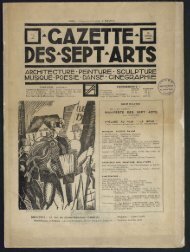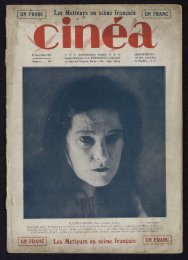You also want an ePaper? Increase the reach of your titles
YUMPU automatically turns print PDFs into web optimized ePapers that Google loves.
<strong>The</strong> Watkins Methods.<br />
DEVELOPMENT.<br />
LMOST the whole power in<br />
development lies in regulating<br />
contrast between the tones, just<br />
as the whole science of exposure<br />
aims simply at securing a difference<br />
in light action for different tones.<br />
Control is exercised by using<br />
a uniform developer, and continuing<br />
development for just the<br />
right time to give the right contrast<br />
in the print, a short time<br />
tending to softness, a long time<br />
to vigour, or, in excess to hardness.<br />
Different subjects do not often require development<br />
variations, as a standard time gives the amount<br />
of contrast seen by the eye, whether it is a large or a<br />
small range of contrast. Time Development<br />
is therefore adopted, and the time varies greatly<br />
according to the brand of Plate and the Temperature<br />
even when a constant developer is used.<br />
<strong>The</strong>re are two distinct Watkins Time Methods<br />
(Factorial and <strong>The</strong>rmo), which are quite separate, and<br />
must not be confused. <strong>The</strong> First is :—<br />
THERMO= . . .<br />
DEVELOPMENT.<br />
This originated with Hurter & Driffield, and has<br />
been improved by Ferguson & Mees. In the Watkins<br />
Method the fact that different plates have different<br />
rates of development is allowed for by using different<br />
dilutions of the developer in accordance with a<br />
classification indicated on the Speed Card (this plan<br />
<strong>The</strong> Watkins Methods.<br />
is now used both for Time Developer as well as with<br />
the Time <strong>The</strong>rmometer). This makes the required<br />
variation for PLATE, the time being always the same<br />
at a given temperature.<br />
<strong>The</strong> variation for TEMPERATURE is indicated<br />
by the scale against the mercury in the Time <strong>The</strong>rmometer.<br />
Variations for subject (not often required)<br />
are made by dilution or concentration of developer.<br />
No dark room light is required, merely a darkened<br />
room.<br />
<strong>The</strong> temperature scale of the <strong>The</strong>rmometer is<br />
adapted to certain developers only, and we do not<br />
undertake to test others for their coefficient,<br />
efficiency, or energy.<br />
FACTORIAL . .<br />
DEVELOPMENT.<br />
A Dark Room light is required. <strong>The</strong> developer<br />
is poured on and the number of seconds elapsing<br />
before the first trace of image appears is noted. This<br />
" time of appearance " makes full allowance for both<br />
brand of plate and temperature, and dilution of<br />
developer, and multiplied by a fixed number (called<br />
the Watkins Factor, which varies for different<br />
developers) gives the total time of development for a<br />
standard contrast.<br />
For details see the Watkins Manual.<br />
Practically it is the exposure which decides the<br />
density of the negative, and development is timed so<br />
as to secure truthful gradation in the print, this is the<br />
end aimed at by the Watkins system.<br />
3.<br />
HHnnmHnm


